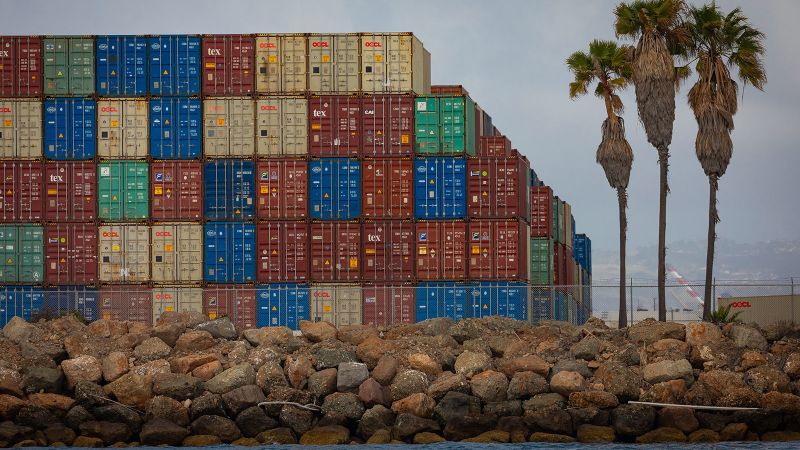US ports are preparing for a potential surge in cargo following a reduction in tariffs on goods imported from China. Starting Wednesday, the tariff rate on Chinese goods bound for the US will drop to 30%, down from the previous 145% rate. This reduction, part of a 90-day de-escalation agreement between the US and China, is expected to prompt retailers to accelerate shipments to avoid future tariff hikes.
Retailers previously stockpiled imports ahead of tariff deadlines, as seen before the initial April 9 tariff implementation. Jonathan Gold, vice president of supply chain and customs policy at the National Retail Federation, noted that some retailers might bring in more products early to preempt potential tariff changes.
Logistics broker Flexport anticipates a significant increase in bookings following the announcement, though the exact scale remains uncertain. Peter Boockvar, an economist at The Boock Report, predicts a rush in ordering over the next 90 days, which could drive up transportation costs.
Despite the anticipated surge, West Coast ports are currently experiencing a significant decline in cargo volume, with a projected 20% reduction in ship arrivals and a 25% drop in cargo volume by the end of the month. This delay is due to the time it takes for ships to travel from China to the US, approximately 3 to 4 weeks.
The Port of Long Beach reported a 35-40% reduction in cargo last week, with no ships leaving China for the San Pedro Bay Complex during a 12-hour period on Friday—an occurrence not seen since the pandemic. Similarly, the Northwest Seaport Alliance, representing Seattle and Tacoma ports, expects an 8% to 15% drop in volume compared to normal times.
While the tariff reduction offers some relief, a 30% rate remains unworkable for many smaller businesses. The US Chamber of Commerce continues to advocate for exemptions for small businesses, highlighting the disparity in tariff impact between larger and smaller retailers.
— new from CNN
